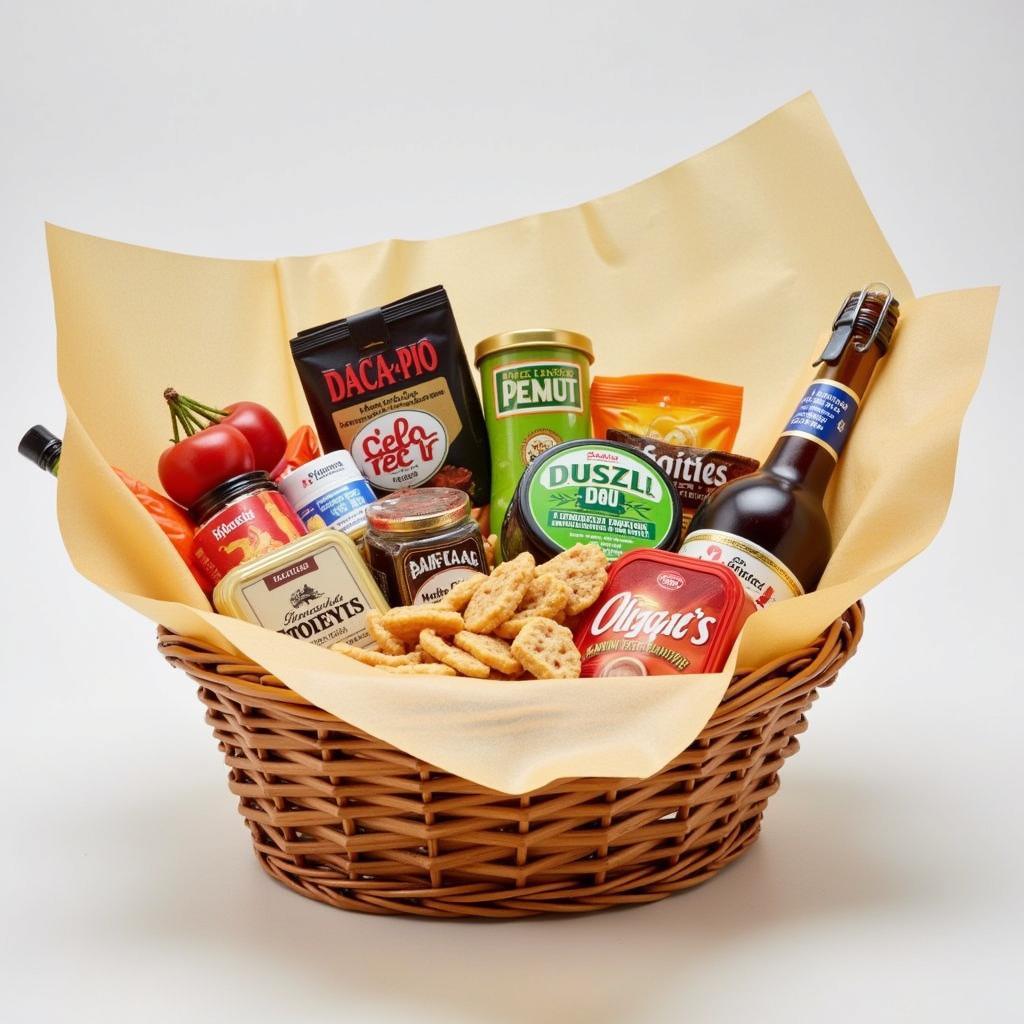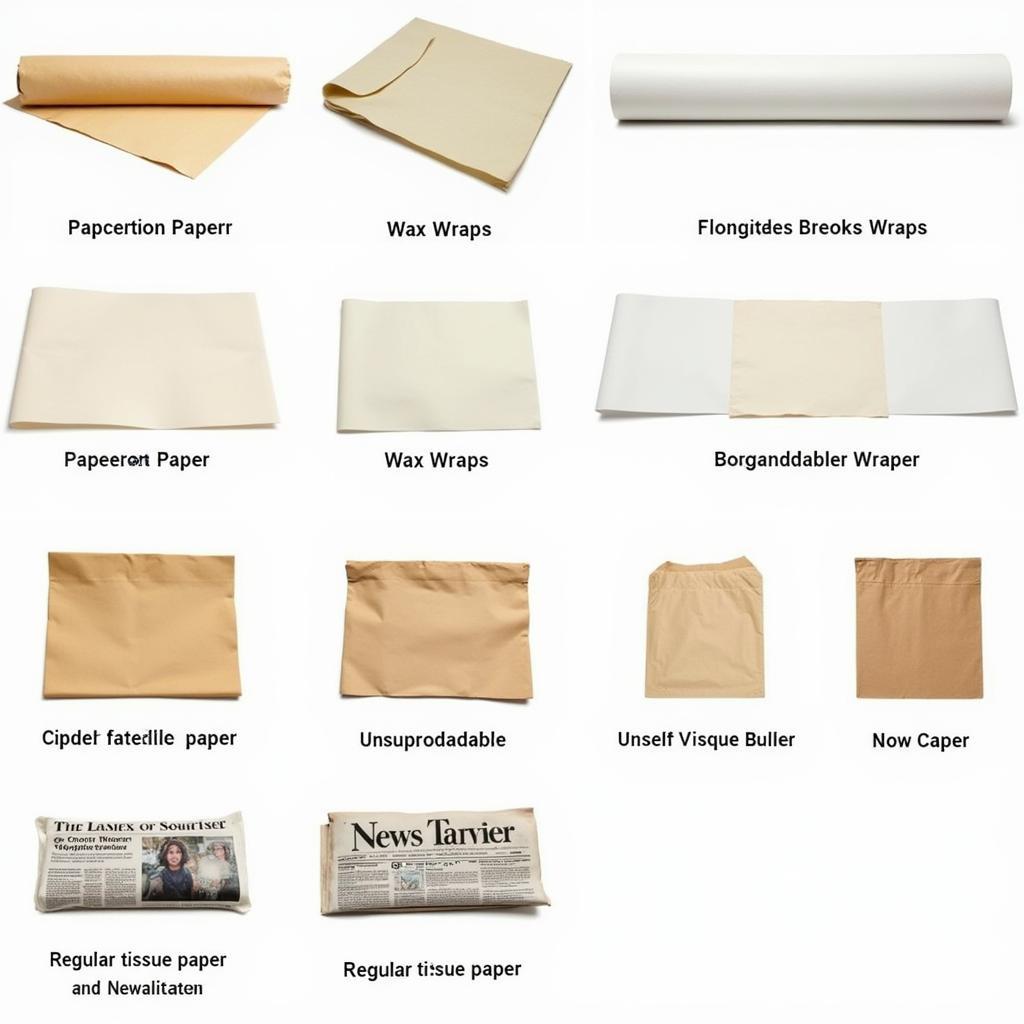Is Tissue Paper Food Safe? It’s a question many of us have pondered while assembling a beautiful charcuterie board or wrapping up a homemade treat. The answer, unfortunately, isn’t a simple yes or no. Let’s delve into the nuances of tissue paper and food safety to ensure your culinary creations remain both delicious and safe to consume.
Understanding Tissue Paper and its Composition
Tissue paper comes in a variety of forms, from the delicate sheets used for gift wrapping to the sturdier varieties found in crafting supplies. The key to understanding its food safety lies in its composition. Some tissue paper is made from virgin pulp, directly from wood fibers. Others are made from recycled materials, which can introduce unknown contaminants. Furthermore, some tissue papers are treated with chemicals like bleach or dyes, which are definitely not meant for consumption.
Virgin Pulp Tissue Paper: A Safer Option?
While virgin pulp tissue paper is generally considered a safer option for food contact compared to recycled tissue paper, it’s not a guarantee of complete safety. Even virgin pulp can be treated with chemicals during processing. Therefore, it’s crucial to look for tissue paper specifically labeled as “food-safe” food safe tissue paper. This designation ensures that the paper has met certain standards and is free from harmful substances.
Beware of Colored and Scented Tissue Paper
Colored and scented tissue papers are a definite no-go when it comes to food contact. These often contain dyes and fragrances that can leach into your food. Imagine biting into a beautifully wrapped cookie only to taste artificial cherry blossom! Not appetizing, is it? Stick to plain, unbleached, and food-grade tissue paper for direct contact with edibles.
Is regular tissue paper safe for wrapping food gifts?
 Using Regular Tissue Paper for Wrapping Food Gifts
Using Regular Tissue Paper for Wrapping Food Gifts
While direct contact is generally discouraged, using regular tissue paper as a decorative outer layer for food gifts is generally acceptable, especially if there’s a layer of food wrap paper separating the food and the tissue. Think of it as adding a pop of color and texture, not as a protective barrier. Always ensure the food itself is properly wrapped in food-safe materials before adding the decorative tissue paper layer.
Food-Safe Alternatives to Tissue Paper
Looking for peace of mind? There are plenty of food-safe alternatives to tissue paper. Parchment paper, wax paper, and baking paper are excellent choices for wrapping and lining food containers. These materials are specifically designed for contact with food and won’t compromise flavor or safety.
Thinking Outside the Box: Creative and Safe Food Wrapping
For a festive touch, consider using food christmas tree ornaments or food christmas ornaments to decorate your edible gifts. These are specifically designed for food presentation and add a unique element. You can also explore using natural materials like leaves or cloth napkins for a more sustainable and visually appealing approach.
“When in doubt, opt for materials specifically designed for food contact,” advises culinary expert, Amelia Carter, a seasoned chef with over 20 years of experience in the food industry. “Food safety should always be a top priority.”
Practical Tips for Safe Food Handling with Tissue Paper
-
Read the label: Always check the tissue paper packaging for specific instructions and warnings.
-
When in doubt, throw it out: If you’re unsure about the safety of a particular tissue paper, it’s best to err on the side of caution and choose a different material.
-
Layer it up: For gift baskets and hampers, consider using food-safe liners or wrappers beneath the tissue paper to create a barrier. southern food gift baskets often benefit from this layered approach.
 Food Safe Alternatives to Tissue Paper for Food Contact
Food Safe Alternatives to Tissue Paper for Food Contact
“Never compromise food safety for aesthetics,” adds James Miller, a renowned food safety consultant. “Using the right materials is key to preventing contamination and ensuring a healthy and enjoyable dining experience.”
Conclusion
So, is tissue paper food safe? The answer is complex and depends on the type of tissue paper. While certain types may be acceptable for indirect contact, always prioritize food-safe materials for direct contact with your culinary creations. By understanding the different types of tissue paper and their potential risks, you can ensure a safe and enjoyable dining experience for everyone.
FAQ
- Can I use colored tissue paper to wrap sandwiches? No, avoid colored tissue paper for direct food contact.
- What’s the safest way to use tissue paper with food? Use it for decorative purposes only, with a food-safe barrier between the tissue and the food.
- What are some good alternatives to tissue paper for food wrapping? Parchment paper, wax paper, and baking paper are excellent choices.
- Is recycled tissue paper safe for food? It’s best to avoid recycled tissue paper for food contact due to potential contaminants.
- Can I use tissue paper inside a gift basket with food? Yes, but ensure the food items are individually wrapped in food-safe materials.
- How can I tell if tissue paper is food-safe? Look for a “food-safe” label on the packaging.
- What should I do if I accidentally use non-food-safe tissue paper with food? Discard the food that came into direct contact with the tissue paper.
For further information or assistance, please contact us at Phone Number: 02437655121, Email: minacones@gmail.com or visit us at 3PGH+8R9, ĐT70A, thôn Trung, Bắc Từ Liêm, Hà Nội, Việt Nam. Our customer service team is available 24/7.